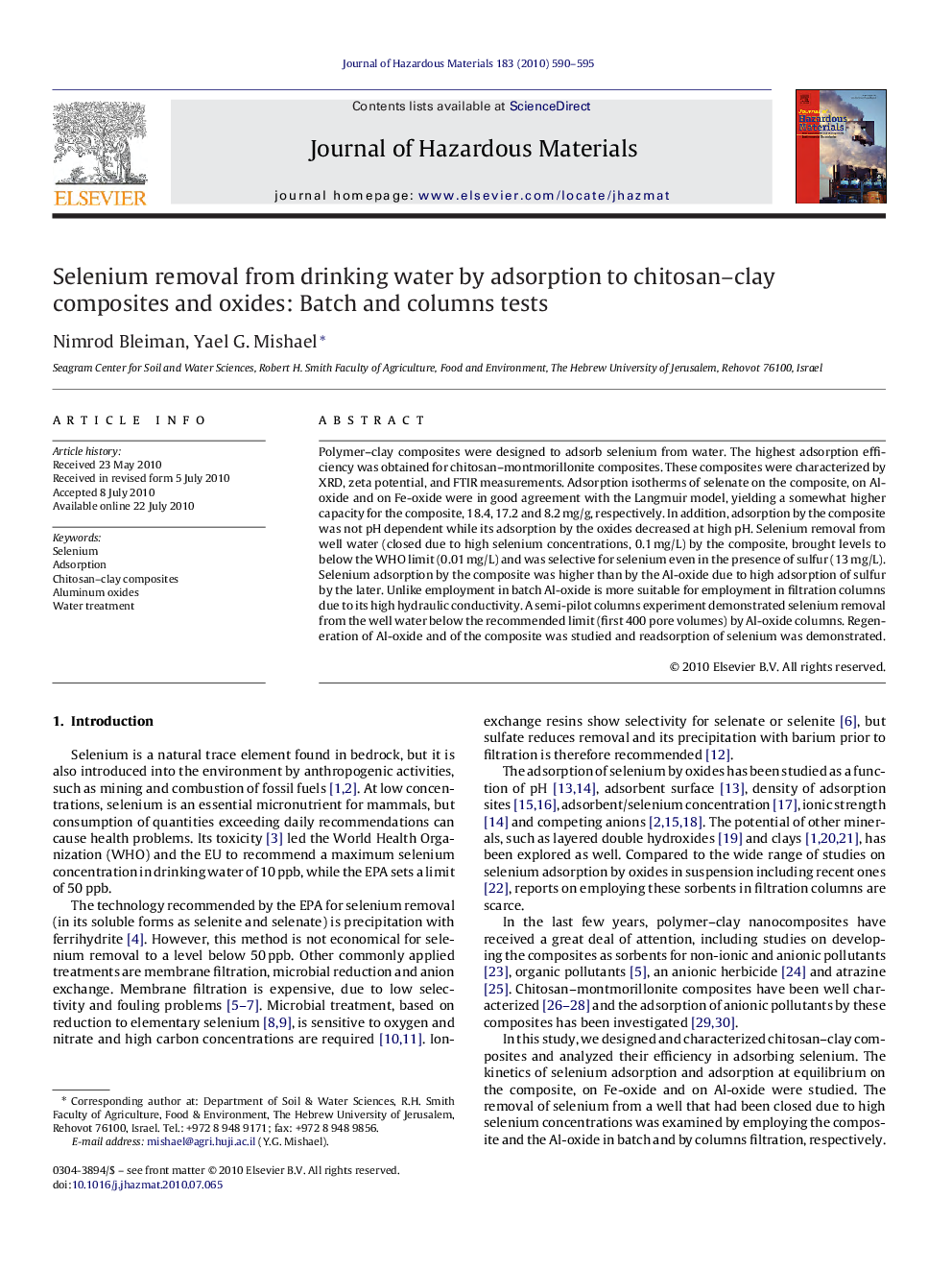| Article ID | Journal | Published Year | Pages | File Type |
|---|---|---|---|---|
| 579565 | Journal of Hazardous Materials | 2010 | 6 Pages |
Abstract
Polymer-clay composites were designed to adsorb selenium from water. The highest adsorption efficiency was obtained for chitosan-montmorillonite composites. These composites were characterized by XRD, zeta potential, and FTIR measurements. Adsorption isotherms of selenate on the composite, on Al-oxide and on Fe-oxide were in good agreement with the Langmuir model, yielding a somewhat higher capacity for the composite, 18.4, 17.2 and 8.2Â mg/g, respectively. In addition, adsorption by the composite was not pH dependent while its adsorption by the oxides decreased at high pH. Selenium removal from well water (closed due to high selenium concentrations, 0.1Â mg/L) by the composite, brought levels to below the WHO limit (0.01Â mg/L) and was selective for selenium even in the presence of sulfur (13Â mg/L). Selenium adsorption by the composite was higher than by the Al-oxide due to high adsorption of sulfur by the later. Unlike employment in batch Al-oxide is more suitable for employment in filtration columns due to its high hydraulic conductivity. A semi-pilot columns experiment demonstrated selenium removal from the well water below the recommended limit (first 400 pore volumes) by Al-oxide columns. Regeneration of Al-oxide and of the composite was studied and readsorption of selenium was demonstrated.
Related Topics
Physical Sciences and Engineering
Chemical Engineering
Chemical Health and Safety
Authors
Nimrod Bleiman, Yael G. Mishael,
